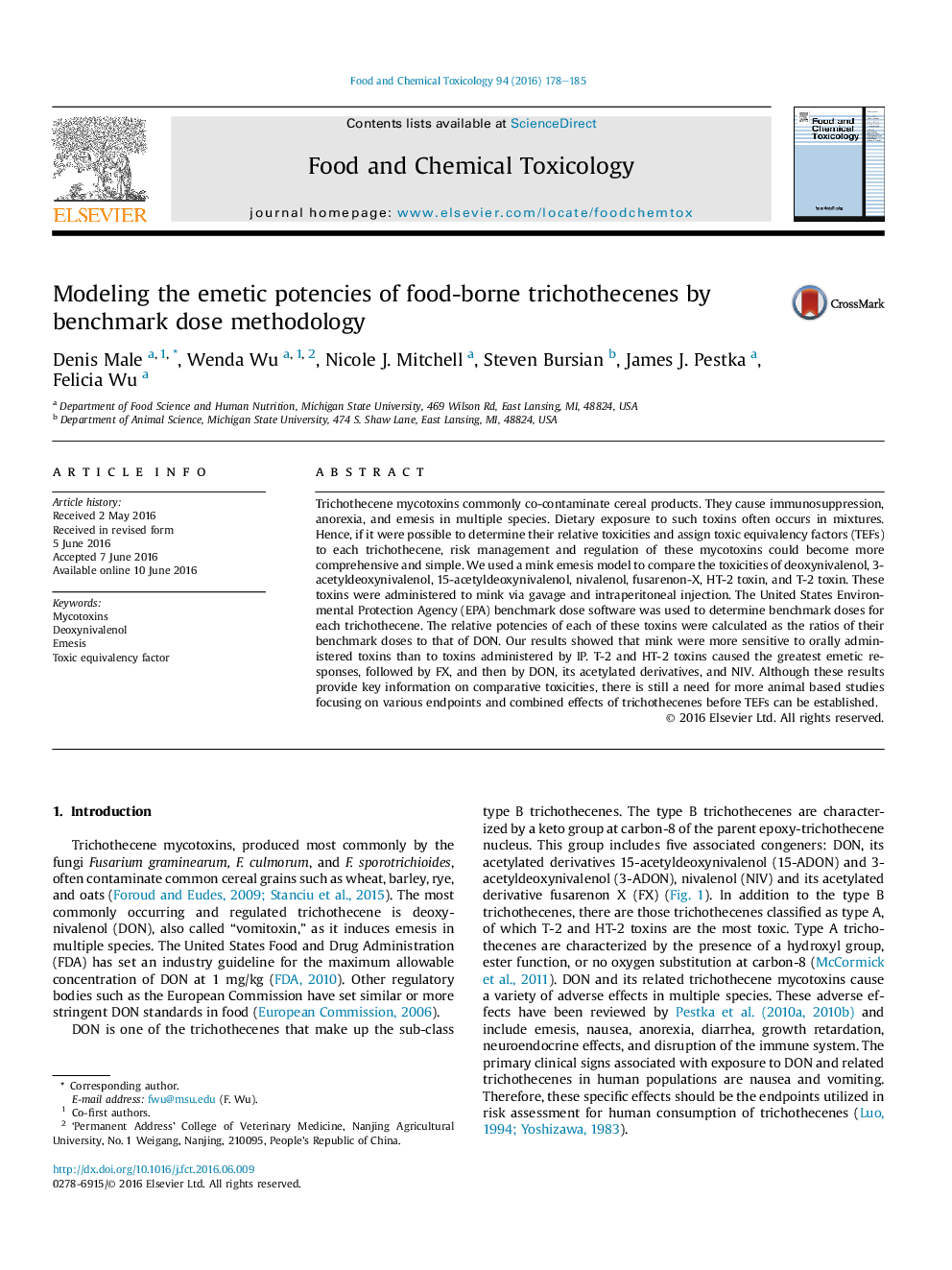| کد مقاله | کد نشریه | سال انتشار | مقاله انگلیسی | نسخه تمام متن |
|---|---|---|---|---|
| 5849376 | 1561750 | 2016 | 8 صفحه PDF | دانلود رایگان |
عنوان انگلیسی مقاله ISI
Modeling the emetic potencies of food-borne trichothecenes by benchmark dose methodology
ترجمه فارسی عنوان
مدل سازی توانایی های خوراکی تری های چربی های خوراکی با استفاده از روش دوز معادل
دانلود مقاله + سفارش ترجمه
دانلود مقاله ISI انگلیسی
رایگان برای ایرانیان
کلمات کلیدی
موضوعات مرتبط
علوم زیستی و بیوفناوری
علوم کشاورزی و بیولوژیک
دانش تغذیه
چکیده انگلیسی
Trichothecene mycotoxins commonly co-contaminate cereal products. They cause immunosuppression, anorexia, and emesis in multiple species. Dietary exposure to such toxins often occurs in mixtures. Hence, if it were possible to determine their relative toxicities and assign toxic equivalency factors (TEFs) to each trichothecene, risk management and regulation of these mycotoxins could become more comprehensive and simple. We used a mink emesis model to compare the toxicities of deoxynivalenol, 3-acetyldeoxynivalenol, 15-acetyldeoxynivalenol, nivalenol, fusarenon-X, HT-2 toxin, and T-2 toxin. These toxins were administered to mink via gavage and intraperitoneal injection. The United States Environmental Protection Agency (EPA) benchmark dose software was used to determine benchmark doses for each trichothecene. The relative potencies of each of these toxins were calculated as the ratios of their benchmark doses to that of DON. Our results showed that mink were more sensitive to orally administered toxins than to toxins administered by IP. T-2 and HT-2 toxins caused the greatest emetic responses, followed by FX, and then by DON, its acetylated derivatives, and NIV. Although these results provide key information on comparative toxicities, there is still a need for more animal based studies focusing on various endpoints and combined effects of trichothecenes before TEFs can be established.
ناشر
Database: Elsevier - ScienceDirect (ساینس دایرکت)
Journal: Food and Chemical Toxicology - Volume 94, August 2016, Pages 178-185
Journal: Food and Chemical Toxicology - Volume 94, August 2016, Pages 178-185
نویسندگان
Denis Male, Wenda Wu, Nicole J. Mitchell, Steven Bursian, James J. Pestka, Felicia Wu,
